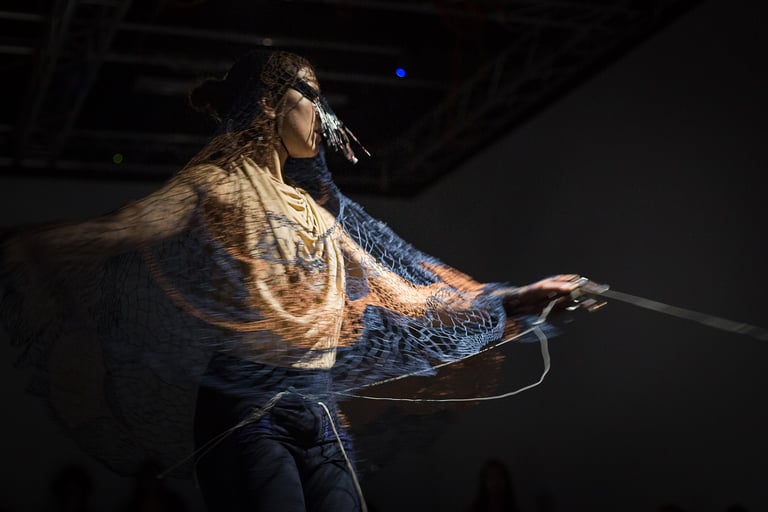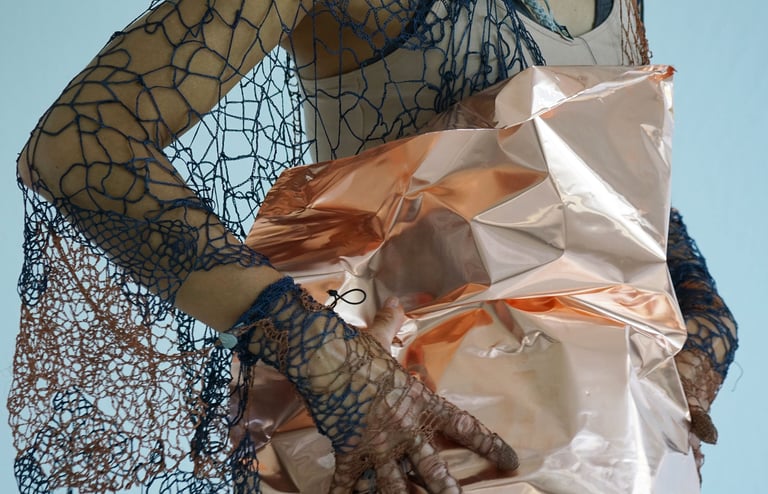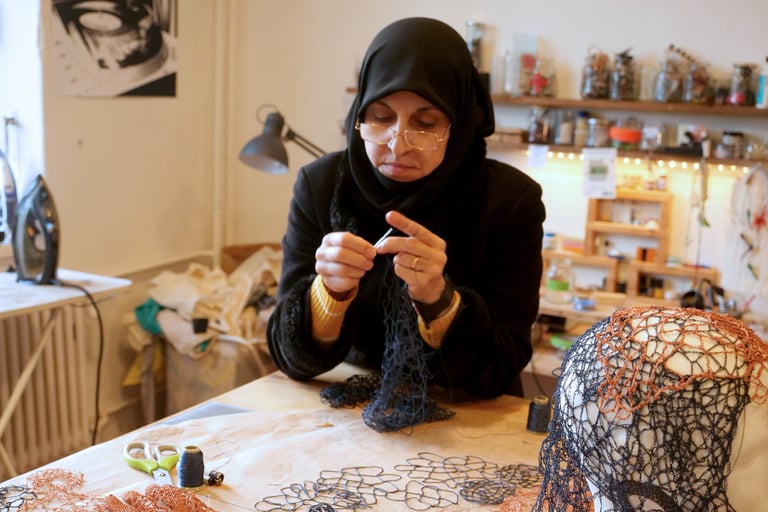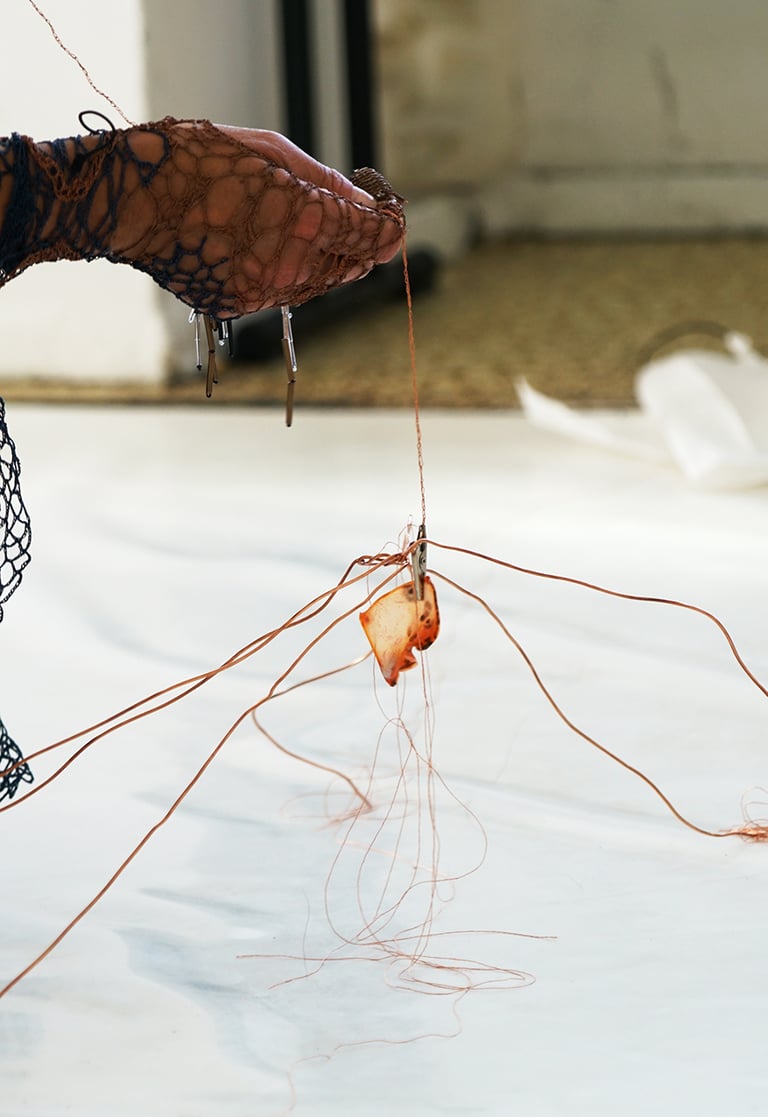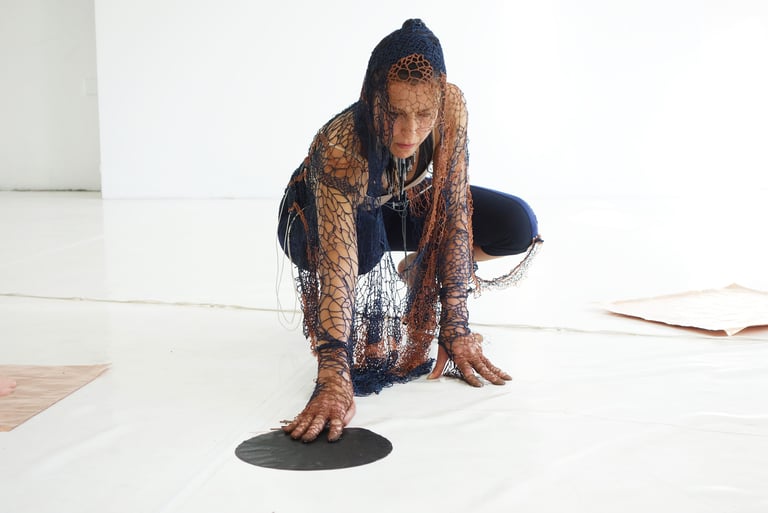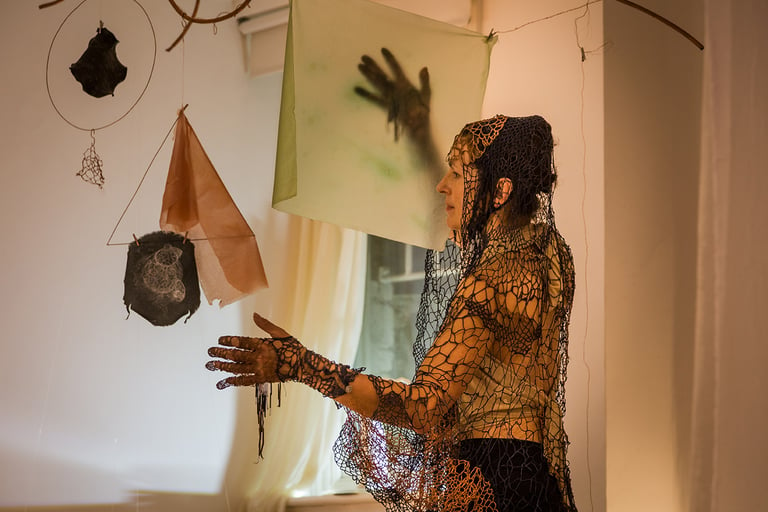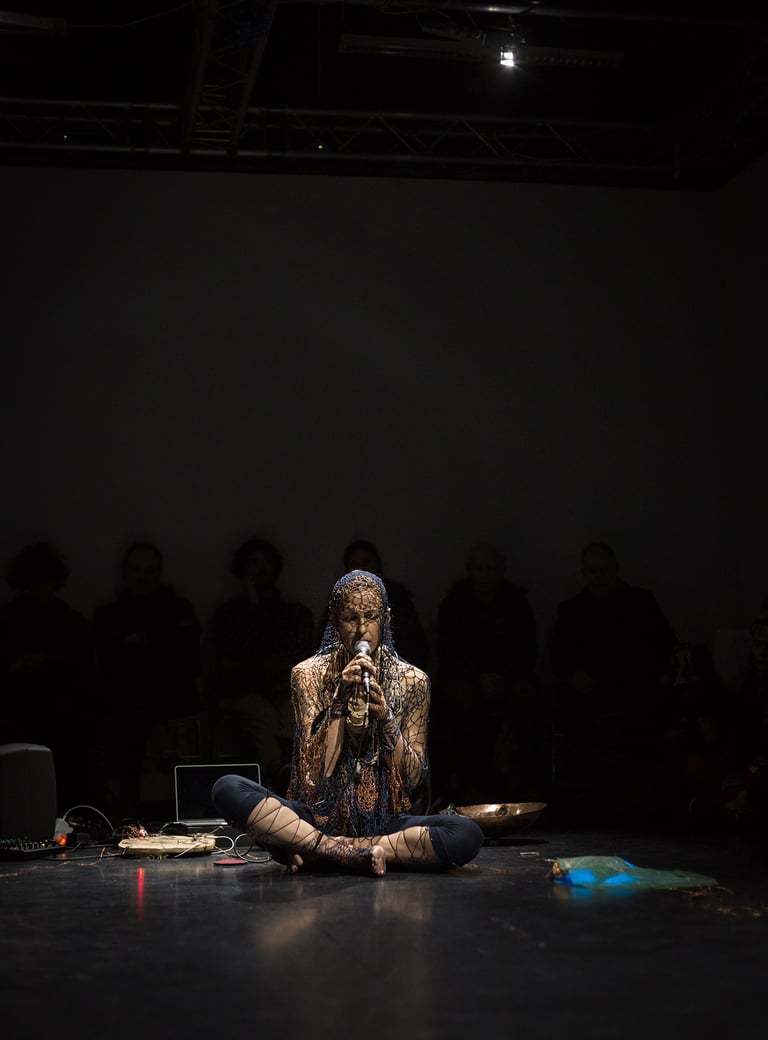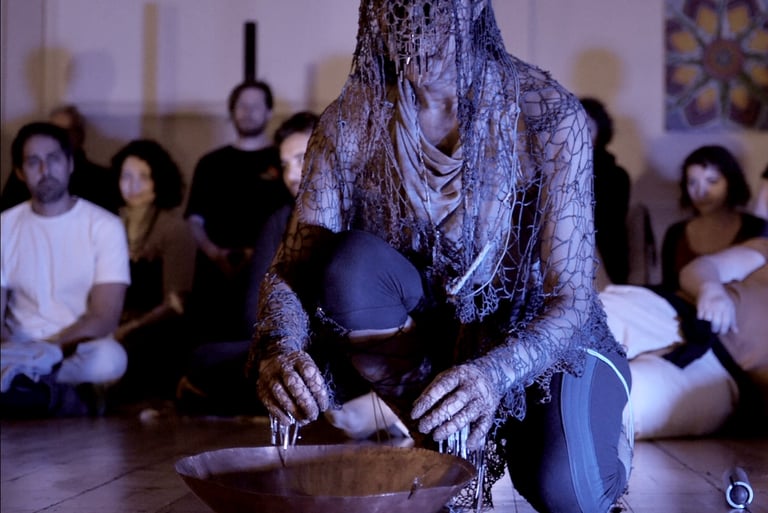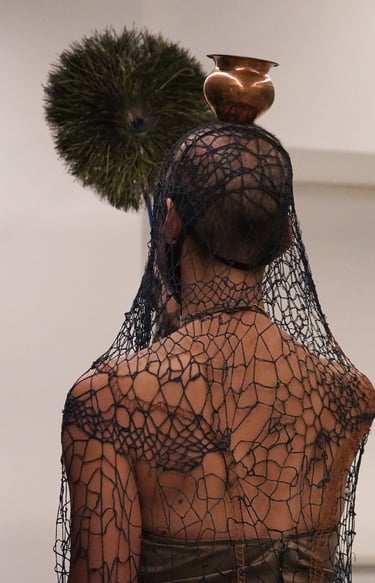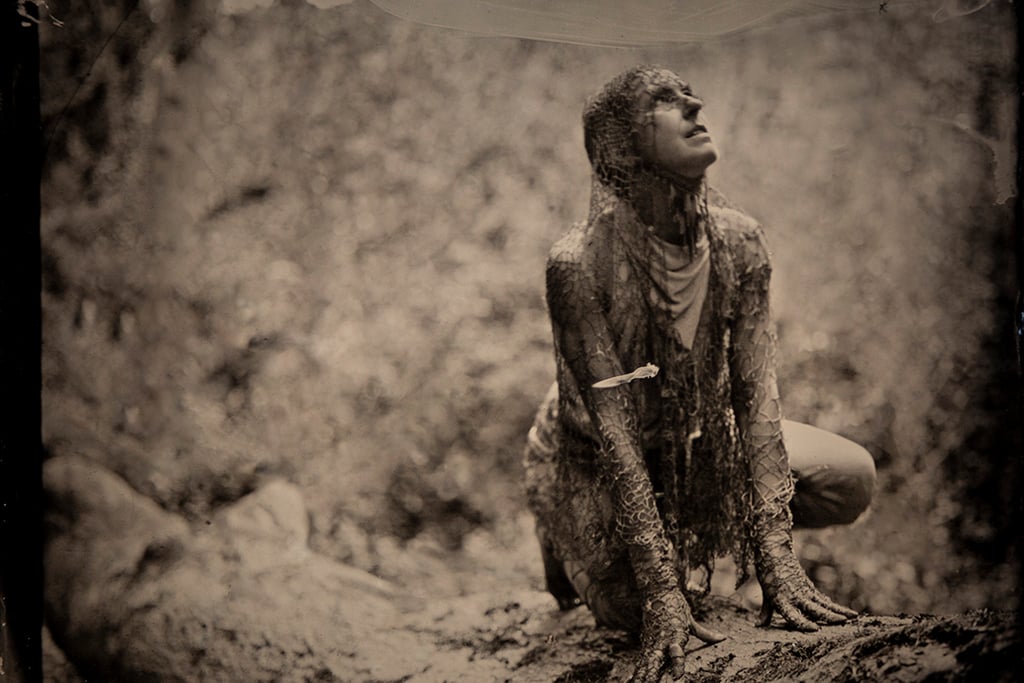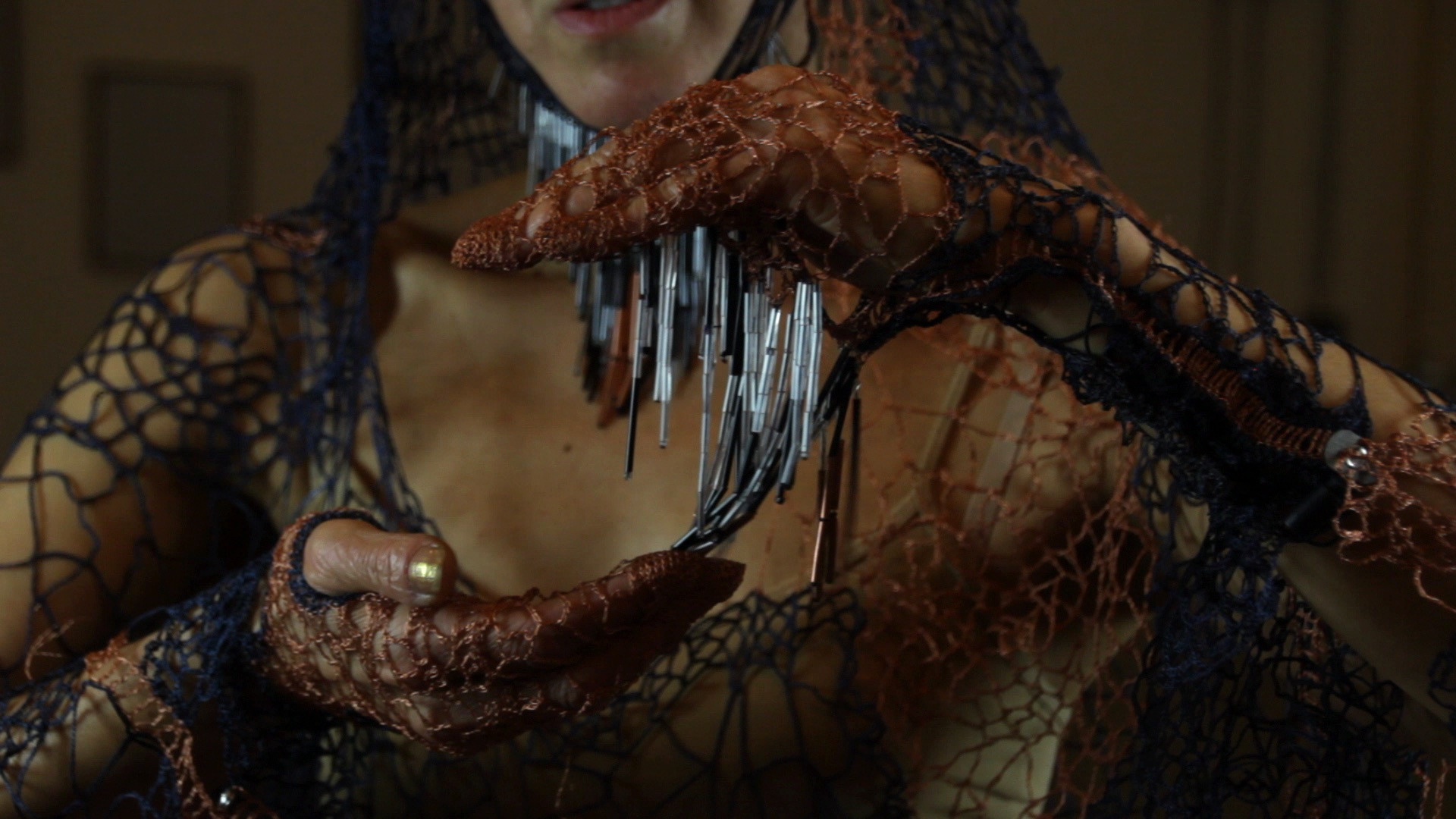
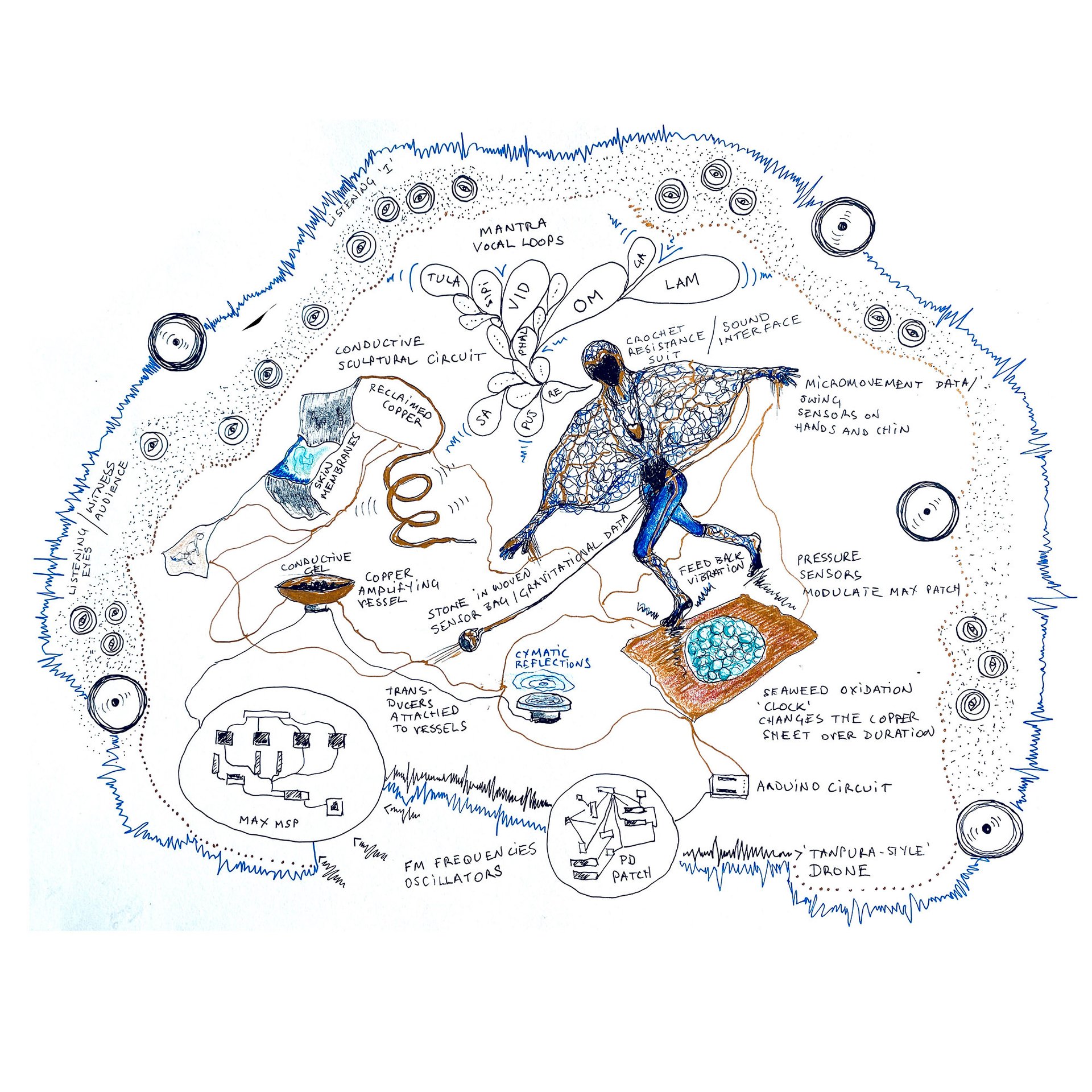
CROCHET RESISTANCE
MIND RAVE / O~VIVE / (HOW TO DREAM A) RASA MACHINE
Body, voice, conductive textiles, copper, electronic sensors, wood, microprocessors, glass beads, MIDI controller, computer, mixer, speakers, work contract, dimensions variable.
Crochet Resistance is an ongoing project that began in 2017 and revealed itself to be something of a fairy tale of labour, care, and revolt. It started with a contract: to remunerate someone for doing the work they loved — crochet — in a craft long dismissed as “women’s work.” The plan was to make a chainmail suit of armour, to stage a soft revolution against the neoliberal gig economy and what it does to artists’ bodies and time.
The contract found its way to the Berlin-based electronic textile collective Kobakant. They had received EU funding to set up a shop where they taught people to make their own computers by hand. Space of the Nameless had received support for research into new biofeedback technologies. The Crochet Resistance suit would now be fabricated from conductive copper yarn, sounding the resistance of a body moving to the liquid time of its own rhythms (see TANTRA / Liquidity). At one point, Mariam A., a Syrian woman displaced by war, joined the project. Our funding allowed her to do what she loved: crochet instead of attending compulsory German language training.
The resulting copper sound-suit is not a costume or decoration, but a wearable instrument — an interface played both by the dancer’s body and by the latent energies in the environment and the audience’s bodies.
Crochet Resistance is slow and delicate work. It has unfolded over years of performances, installations, and collaborations. The suit’s shimmering, conductive surface demands its own pace of movement, otherwise everything tangles. Choreographies and installations — which also include bespoke lighting objects for the audience to move with, and haptic bio-film circuitry — have appeared under the title Mind Rave at Iklectik Art Lab (London), and as a larger immersive installation O~ Vive, incorporating cymatics, gels, bio-membranes, and sonic seating that lets audiences hear sound through their bodies.
Its most developed incarnation is (How to Dream a) Rasa Machine, created in collaboration with composer Pietro Bardini. Here, the crochet suit transduces the uncontrollable “noise of a life” — breath, tremor, heartbeat, weight — into dense soundscapes of drones and harmonics influenced by the principles of Indian raga. The dancer’s movements must adapt to the suit’s sensitivity through a choreography of relational attunement. The installation becomes a distributed instrument, with electronic tamburas responding to the ambient electrical charge of the environment.
Drawing on the Indian aesthetic theory of rasa — the spiritual pleasure of deep immersion — the project engages the audience’s imagination to stage a listening protest against neoliberal economics, in a space where bodies can experience sensuous transformation.
Crochet Resistance has been supported by Arts Council England (DYCP, 2023), mentored by electronic music pioneer Atau Tanaka, with input from La Monte Young and Jung Hee Choi, and developed through the doctoral research project Space of the Nameless (Goldsmiths, 2024). Its sonic language draws on the precedents of La Monte Young and Marian Zazeela’s Dream House.


The Crochet Resistance contract, extract (2017).
